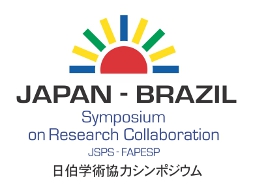MARCOS SILVEIRA BUCKERIDGE
Title
Perspectives on Bioethanol Research in Brazil.
Abstract
The analysis of the energy sources of Brazil compared with the rest of the world shows that the Brazilian energy system is distinctly directed to use biomass, having thrice the proportion of the world average. Ethanol from sugarcane represents 16% of the energy sources. In spite of this tradition in the industry of bioethanol, scientific development has not followed the same pace along the years. As a result of the increasing demand for renewable energy, several scientific programs have started in Brazil during the last five years. They are the BioEn program, founded by FAPESP (Foundation for Support of Science of the State of São Paulo) and the National Institute of Science and Technology of Bioethanol (INCT-Bioethanol), a joint effort of the Federal government and the State of São Paulo with headquarters at the University of São Paulo. EMBRAPA also created a new research center in Brasilia (EMBRAPA Agroenergy), which will have bioenergy as its primary focus of research. The primary research focus in Brazil is on sugarcane and bioethanol. One of the main goals is to improve crop productivity by understanding how plants respond to environmental stresses. Combining classical genetic breeding and agribiotech strategies that take into account molecular biology, biochemistry, physiology and ecophysiology, researchers expect to improve sugarcane beyond what has been done so far. To achieve this goal we are going to have the complete genome sequence of sugarcane and with this information in hands, find ways to help to improve sugarcane by using tools related to systems and synthetic biology. The second generation (2G) bioethanol is a key short-term goal to improve bioethanol production from sugarcane in Brazil. To achieve that, Brazilian researchers have been working on the enzymes produced by microorganisms from biodiversity (e.g. metagenomics) followed by isolating and characterizing enzymes, cloning genes and engineering some of the enzymes in order to improve activity. Of the same importance has been the goal to understand cell wall structure, metabolism and diversity. Other research groups are dedicated to combine best sugarcane biomass features with enzyme cocktails in order to help to develop new processes that would lead to the production of 2G bioethanol. As this will have to be done with minimal impacts on the environment, sugarcane research is also focused on improving environmental sustainability, with intense scientific activity to understand carbon emissions and the impacts on water and land used provoked by Biofuels production. The actual state of the Brazilian S&T system is trying to coordinate actions that we expect to lead to a highly efficient science based production of energy from biomass, having social inclusion and the lowest possible environmental impact.
Short Bio
Marcos Buckeridge is Associate Professor at the Department of Botany of the University of São Paulo and Director of the Instituto Nacional de Ciência e Tecnologia do Bioetanol (INCT do Bioetanol), that gathers 32 laboratories in 6 states of Brazil with several collaborations in the US and Europe and also also deputy director of Centro de Processos Biológicos e Industriais para Biocombustíveis (CeProBIO), a large initiative to develop basic science in collaboration with the European Union. From 2009 to 2012 he was also Scientific Director of the Brazilian Bioethanol Science and Technology Laboratory (CTBE), in Campinas. Buckeridge develops research on Plant Cell Wall Degradation and on the Physiological and Biochemical Responses of Plants to the Environment. In 2010, he was appointed a Lead Authors for the next Intergovernmental Panel of Climatic Chanes (IPCC) report (AR5) to be released in 2014. Buckeridge has more than 120 publications in plant physiology, biochemistry and molecular biology and is communicating editor for the international journals Trees: structure and function (Springer), Bioenergy Research (Springer),Global Change Biology Bioenergy (Wiley).







